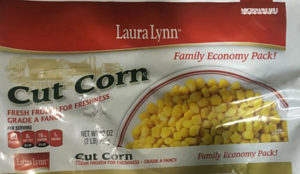Campylobacteriosis is one of the most important foodborne diseases worldwide and a significant health burden in New Zealand. Campylobacter jejuni is the predominant species worldwide, accounting for approximately 90% of human cases, followed by Campylobacter coli. Most studies in New Zealand have focused on C. jejuni; hence, the impact of C. coli strains on  human health is not well understood.
human health is not well understood.
The aim of this study was to genotype C. coli isolates collected in the Manawatu region of New Zealand from clinical cases, fresh poultry meat, ruminant feces, and environmental water sources, between 2005 and 2014, to study their population structure and estimate the contribution of each source to the burden of human disease.
Campylobacter isolates were identified by PCR and typed by multilocus sequence typing. C. coli accounted for 2.9% (n = 47/1,601) of Campylobacter isolates from human clinical cases, 9.6% (n = 108/1,123) from poultry, 13.4% (n = 49/364) from ruminants, and 6.4% (n = 11/171) from water.
Molecular subtyping revealed 27 different sequence types (STs), of which 18 belonged to clonal complex ST-828. ST-1581 was the most prevalent C. coli sequence type isolated from both human cases (n = 12/47) and poultry (n =44/110). When classified using cladistics, all sequence types belonged to clade 1 except ST-7774, which belonged to clade 2. ST-854, ST-1590, and ST-4009 were isolated only from human cases and fresh poultry, while ST-3232 was isolated only from human cases and ruminant sources. Modeling indicated ruminants and poultry as the main sources of C. coli human infection.
Importance
We performed a molecular epidemiological study of Campylobacter coli infection in New Zealand, one of few such studies globally. This study analyzed the population genetic structure of the bacterium and included a probabilistic source attribution model covering different animal and water sources. The results are discussed in a global context.
Molecular epidemiology of Campylobacter coli strains isolated from different sources in New Zealand between 2005 and 2014
Antoine Nohra a,b, Alex Grinberg b, Anne C. Midwinter a,b, Jonathan C. Marshall a, Julie M. Collins-Emerson a,b and Nigel P. French a,b
A Molecular Epidemiology and Veterinary Public Health Laboratory (mEpiLab), Infectious Disease Research Centre, Hopkirk Institute, Massey University, Palmerston North, New Zealand
b Infectious Diseases Group, Institute of Veterinary, Animal and Biomedical Sciences, Massey University, Palmerston North, New Zealand
Applied and Environmental Microbiology, Volume 82, Number 14, Pages 4363-4370, doi:10.1128/AEM.00934-16
http://aem.asm.org/content/82/14/4363.abstract?etoc
 The company launched the recall after a routine sample collected at a retail location by the N.C. Department of Agriculture and Consumer Services tested positive for Listeria monocytogenes. No illnesses have been reported to date.
The company launched the recall after a routine sample collected at a retail location by the N.C. Department of Agriculture and Consumer Services tested positive for Listeria monocytogenes. No illnesses have been reported to date.







